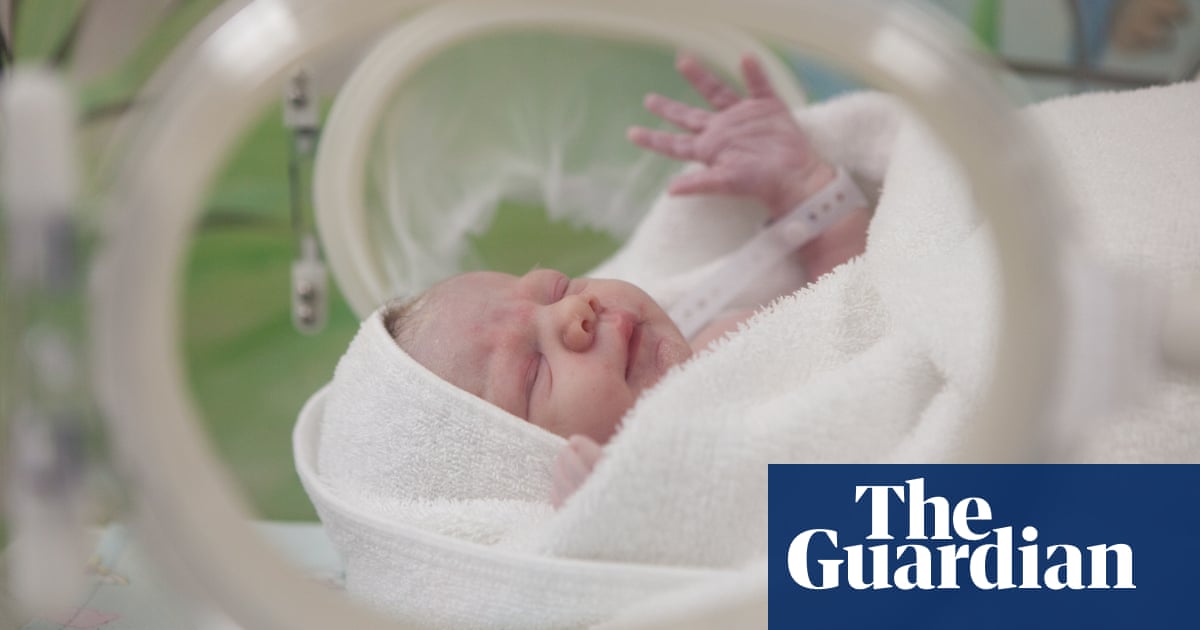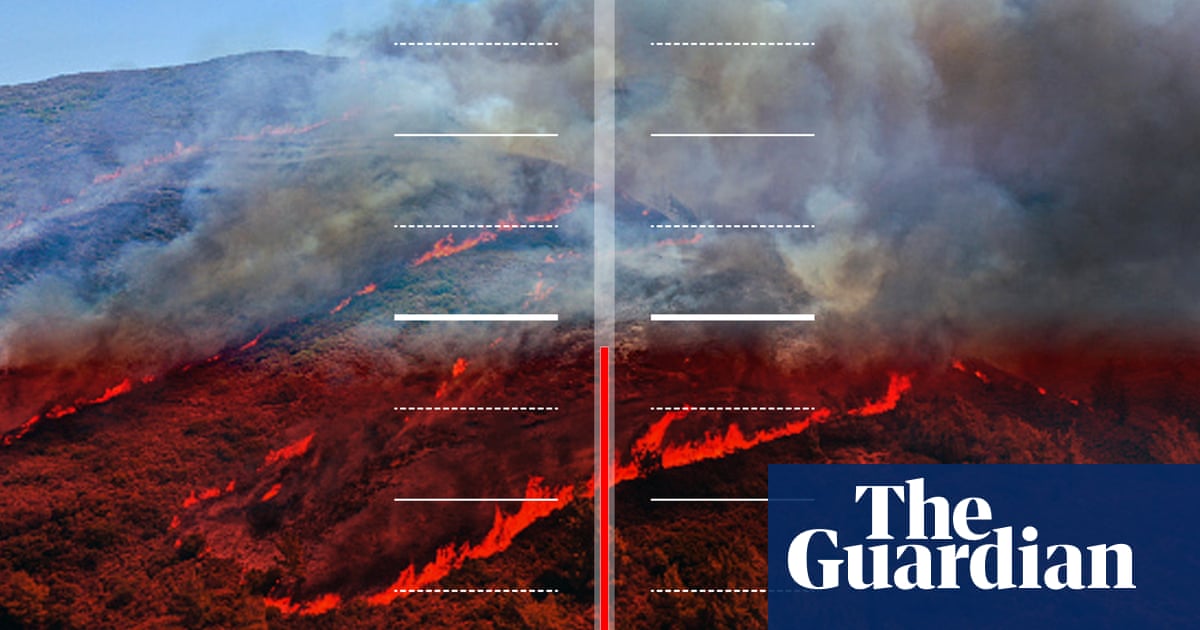
The climate crisis is damaging the health of foetuses, babies and infants across the world, six new studies have found.
Scientists discovered increased heat was linked to fast weight gain in babies, which increases the risk of obesity in later life. Higher temperatures were also linked to premature birth, which can have lifelong health effects, and to increased hospital admissions of young children.
Other studies found exposure to smoke from wildfires doubled the risk of a severe birth defects, while reduced fertility was linked to air pollution from fossil fuel burning, even at low levels. The studies, published in a special issue of the journal Paediatric and Perinatal Epidemiology, spanned the globe from the US to Denmark, Israel and Australia.
“From the very beginning, from preconception, through early childhood into adolescence, we’re starting to see important impacts of climate hazards on health,” said Prof Gregory Wellenius, who edited the issue with Amelia Wesselink, both at the Boston University school of public health, in the US.
“This is a problem that affects everybody, everywhere. These extreme events are going to become even more likely and more severe with continued climate change [and this research shows] why they’re important to us, not in the future, but today.”
The link between heat and rapid weight gain in the first year of life was found by scientists in Israel. They analysed 200,000 births and found that babies exposed to the highest 20% of night-time temperatures had a 5% higher risk of fast weight gain.
The work has “important implications for both climate change and the obesity epidemic”, the researchers, from the Hebrew University of Jerusalem, said, because infancy is critical in determining adult weight and because obese people may suffer more in extreme heat. “It’s an interesting hypothesis that’s very much worth following up,” Wellenius said.
Globally, 18% of children are now overweight or obese. A possible mechanism for the rapid infant weight gain is that less fat is burned to maintain body temperature when the ambient temperature is higher.
A California study found a mother’s exposure to wildfires in the month before conception doubled the risk of a birth defect called gastroschisis, where a baby’s intestines and sometimes other organs protrude out of the body through a small hole in the skin.
The scientists examined two million births, 40% of them to mothers living within 15 miles of a wildfire and the resulting air pollution, which was already known to be harmful to pregnant women and their foetuses. They found a 28% rise in the risk of the birth defect in mothers living close to wildfires in the first trimester of pregnancy.
Foetal gastroschisis is rare – there are about 2,000 cases a year in the US. But cases are rising worldwide. “Human exposure to wildfires is anticipated to increase in coming decades,” said Bo Young Park, at California State University. “Therefore, a thorough understanding of the negative health outcomes associated with wildfires is critical.”
Two new studies examined the link between high temperatures and premature birth. The first assessed almost one million pregnant women in New South Wales, Australia, from 2005 to 2014, of whom 3% delivered their babies before 37 weeks.
The researchers found that those in the hottest 5% of places in the state in the week before birth had a 16% higher risk of premature birth. Previous research had found a similar effect in the warmer sub-tropical city of Brisbane, but this was the first in a more temperate region of Australia.
“The risk of [premature] birth is likely to increase with the expected increase in global temperatures and heatwaves – this is a potentially serious concern,” said the researchers, led by Edward Jegasothy at the University of Sydney.
The second study analysed 200,000 births from 2007-2011 in Harris County, Texas – which includes Houston – where people are accustomed to heat. The period included Texas’s hottest summer on record in 2011.
A quarter of the mothers were exposed to at least one very hot day while pregnant, days when temperature reached the top 1% of historic summer temperatures. The risk of any premature birth was 15% higher the day after these very hot days, the scientists found. But the risk was even higher for especially early births, tripling for babies born before 28 weeks, and was also higher for the most disadvantaged 20% of the mothers.
“Public health warnings during heatwaves should include pregnant people, especially given our finding of stronger associations earlier in gestation when the consequences of preterm birth are more severe,” said the researchers, led by Lara Cushing, at the University of California, Los Angeles. How heat triggers premature births is not known but it may be because of the release of labour-inducing hormones.
This new research adds weight to a 2020 review of 68 studies, comprising 34m births, that linked heat and air pollution to higher risks of premature birth, low birth weight and stillbirth. Bruce Bekkar, an author of the review and retired obstetrician, said: “We are already having generations weakened from birth.”
Wellenius said: “Even moderate levels of heat can affect the developing foetus, pregnancy complications, and children and adolescents. Although the risk to an individual is modest, because so many people are exposed, the total number of excess events, whether they be premature births or deaths, is substantial.”
Hotter temperatures also increased the number of admissions of young children to emergency departments in New York City, another new study found. The scientists looked at 2.5m admissions over eight years and found that a 7C rise in maximum temperature led to a 2.4% increase in admissions in under-fives. Young children lose proportionally more fluids than adults and their ability to regulate their body temperature is immature, the researchers said.
The burning of fossil fuels drives the climate crisis but also causes air pollution and a new study in Denmark assessed the impact of dirty air on 10,000 couples trying to conceive naturally. It found that increases in particle pollution of a few units during a menstrual cycle led to a decrease in conception of about 8%.
A recent study in China also found that air pollution significantly increased the risk of infertility, but the average pollution level was more than five times higher than in the Danish study. “Air pollution [in Denmark] was low and almost entirely at levels deemed safe by the European Union,” said Wesselink. “Current standards may be insufficient to protect against adverse reproductive health effects.”
Wellenius said an important aspect of the studies was that they showed that vulnerable people often suffered the worst effects, for example people of colour and those on low incomes who did not have air conditioning or lived in areas with higher air pollution. “This is absolutely a health equity and justice issue,” he said.












